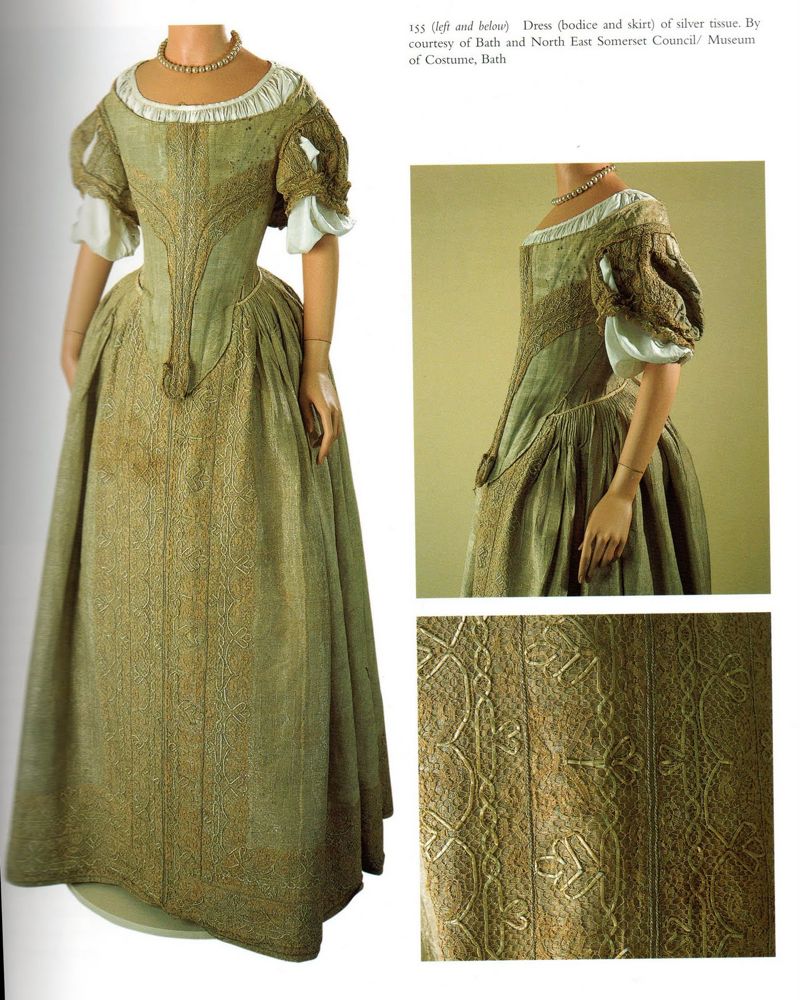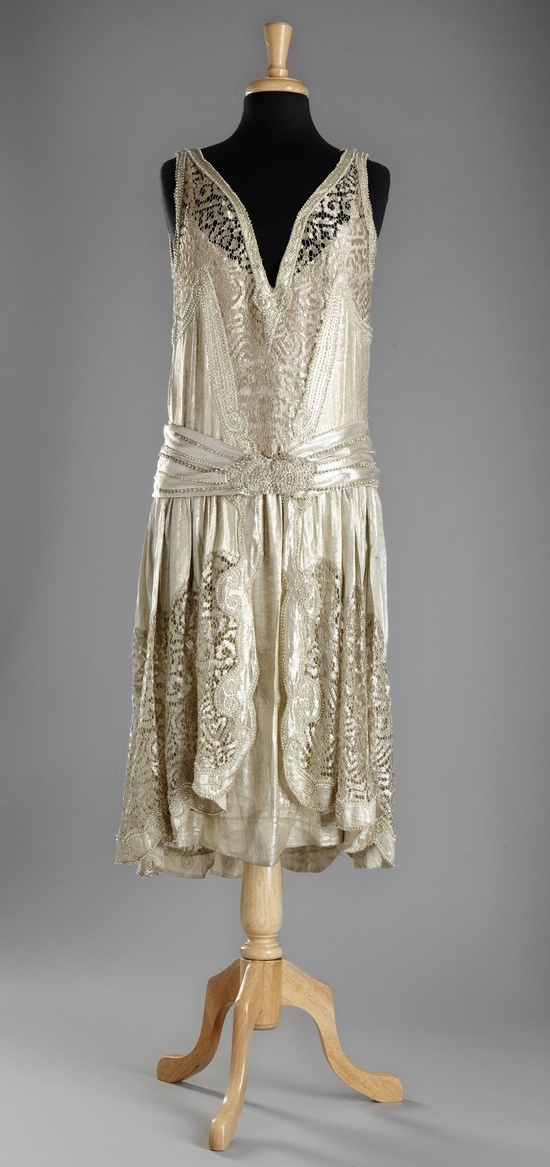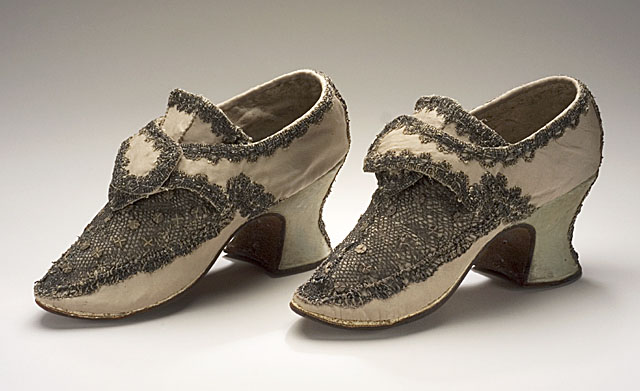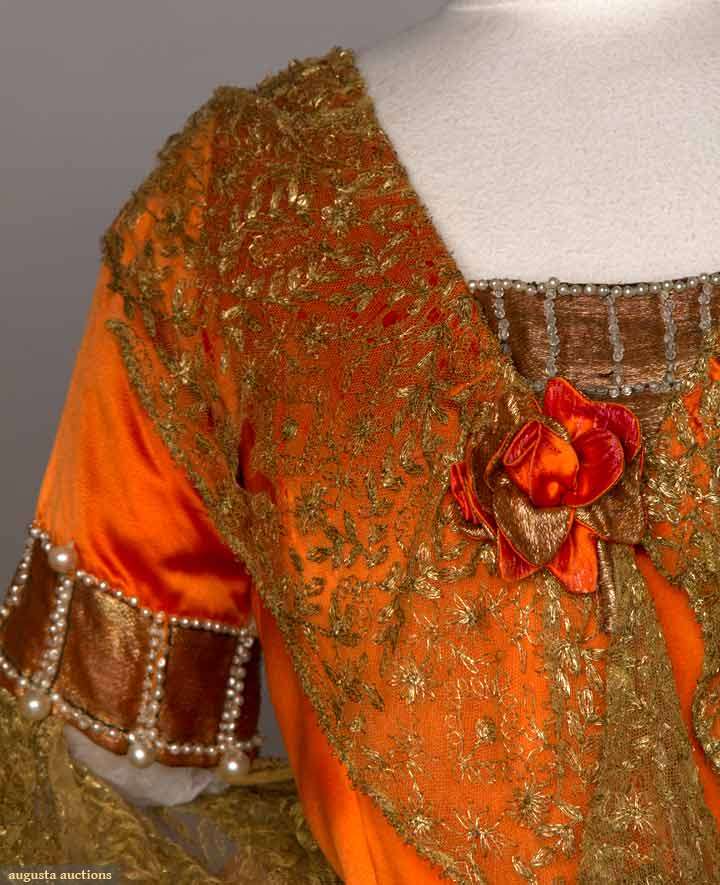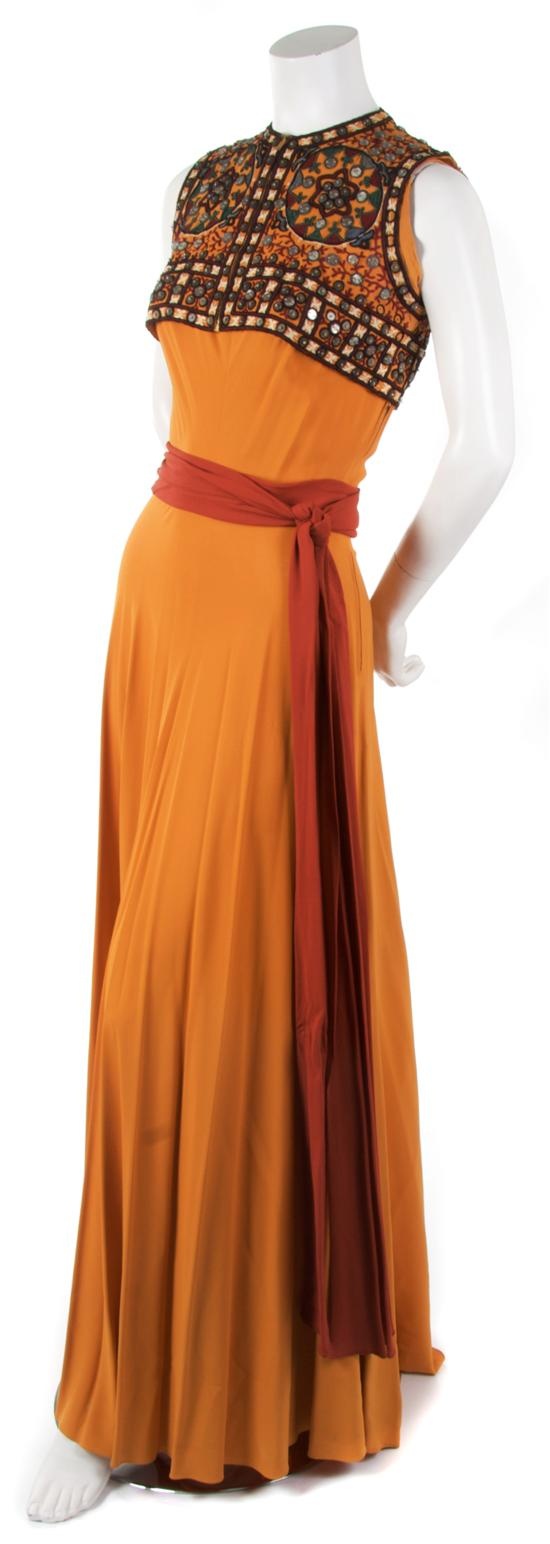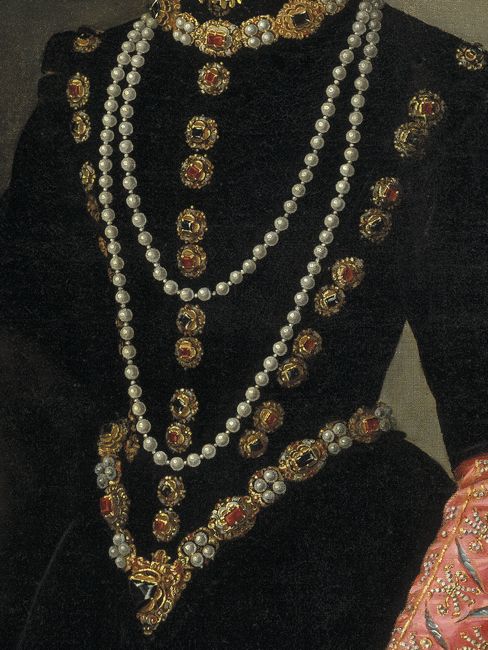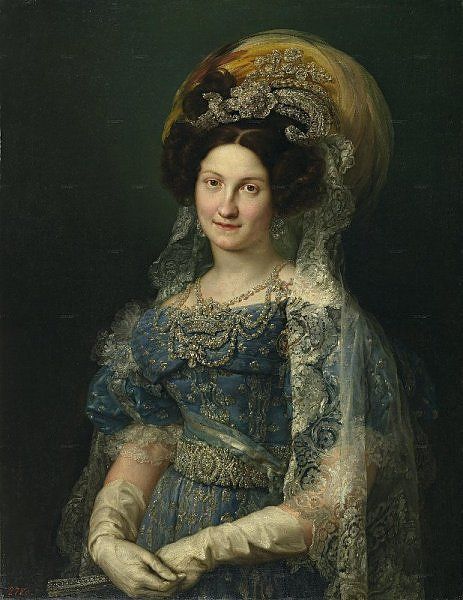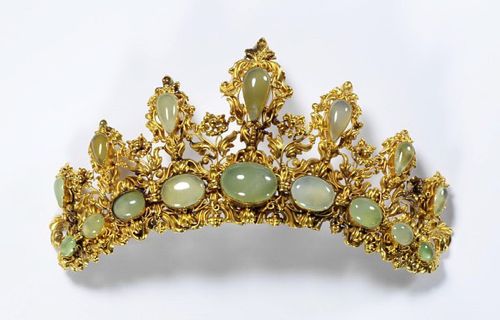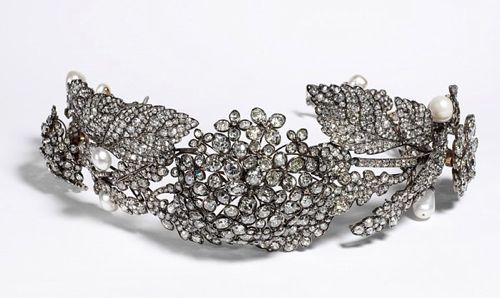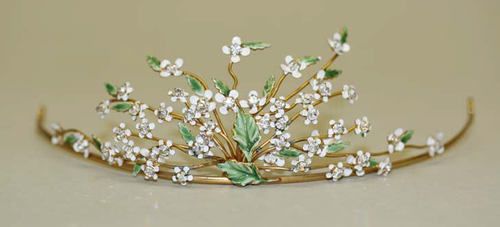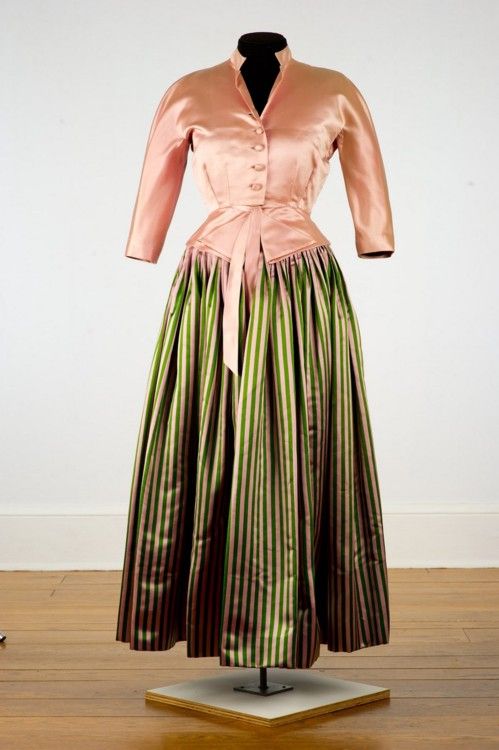And this is it! The last challenge for the HSF 2014. The theme for Challenge #24, due Thur 1 Jan, is All that Glitters: Celebrate your completion of HSF ’14, and the New Year, with a glittery, glitzy, sparkly, shiny, something.
Sparkle and shine have been desirable attributes of textiles almost since there were textiles. Sparkle was associated with precious metals and stones, conveying wealth and status on dress. Silk has been the most valuable fibre for centuries, in huge part because of its lustre and shine. While sparkle and shine are sometimes seen in daywear today, they are still hugely associated with evening wear and special events: clothes for memorable occasions.
Finishing the HSF is pretty memorable, so let’s make some glittery, glitzy, sparkly, shiny items to celebrate!
You could use satin, long prized for its sheen and lustre (interestingly, this week’s Rate the Dress has copped some criticism for the sheen of the silk satin)
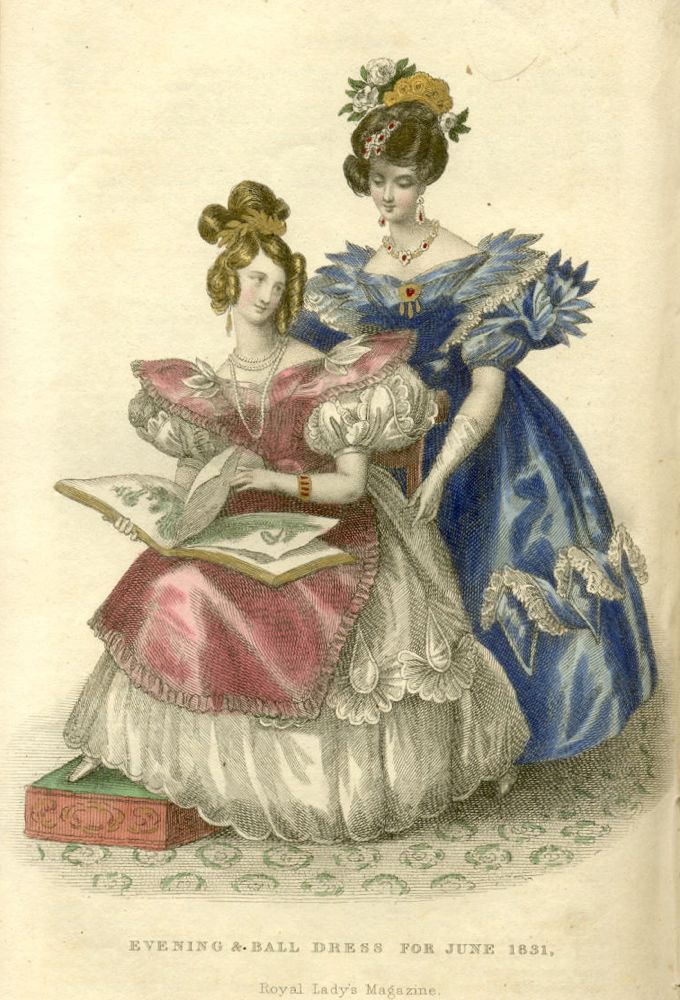
Dress of white aerophane crape and satin, over a rich white satin slip, Royal Ladies Magazine, June 1831, via Koshka the Cat
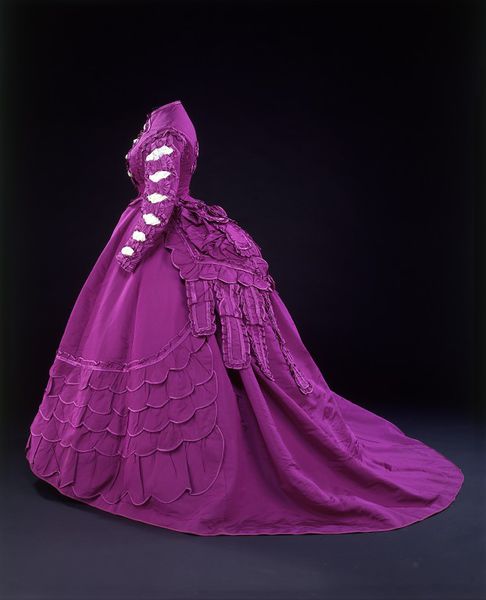
Dress, Paris, France, 1869-1870, Vignon, Ribbed silk trimmed with satin, faced with cotton, brass, Victoria & Albert Museum, T.118 to D-1979

Evening gown, ca. 1880, silk, gold thread, lace, silk braid and silk flowers, Museo de Historia Mexicana
Or sequins, which have a much older pedigree than many people realised. Sequins made by covering wooden disks in gold foil have been found in Bronze Age graves. Shiny metal disks have been used to decorate clothing in dozens of era’s and cultures since then. They have provided sparkle on 18th century men’s waistcoats:
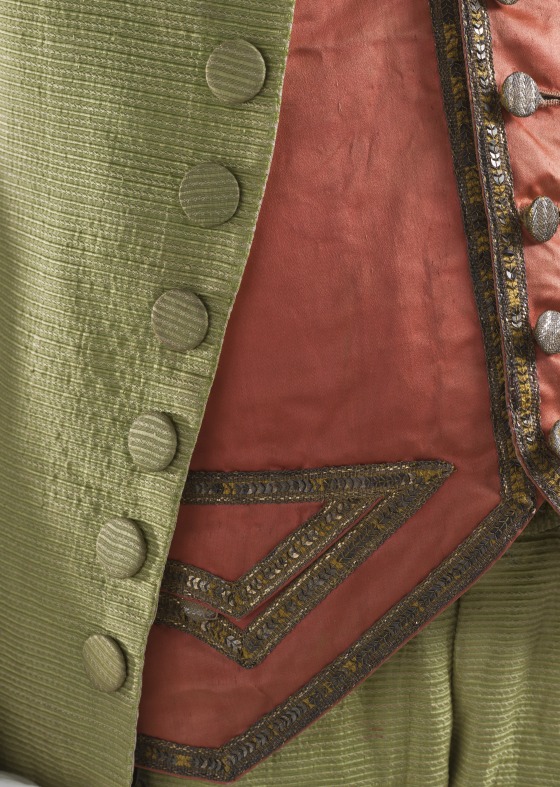
Man’s Three-piece Suit (detail of suit worn with coral vest) Italy, probably Venice, circa 1785-1790, LACMA
And early 20th century evening dresses, where the shine of metal has been replaced by lighter, sparklier, more fragile celluloid:

Evening Dress, 1909, Callot Soeurs, Paris, Silk mesh embellished with celluloid sequins and paste gems, Gregg Museum of Art & Design, 2003.014.208
If satin is to subtle, and sequins too shiny, there is always the decadence of cloth of gold or silver:
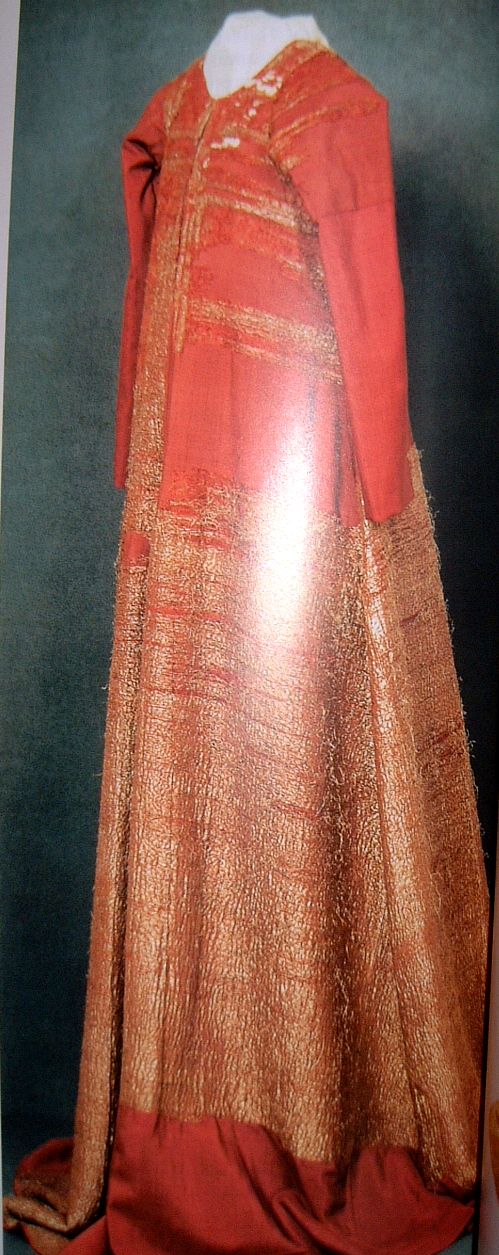
Gown of Italian gold brocade with a pomegranate design in gold on a reddish-violet silk ground. First half of the 15th century.
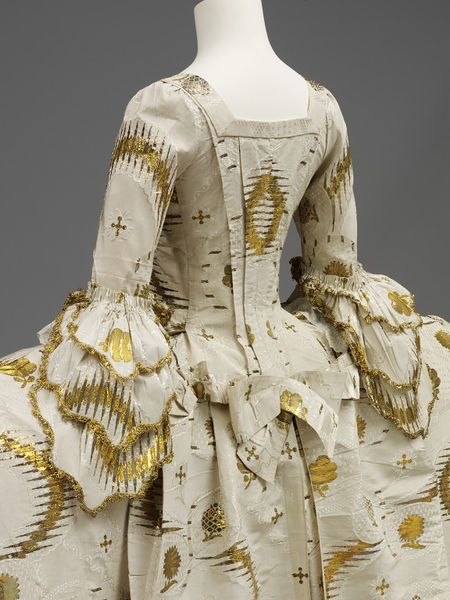
Mantua, English from French fabric, 1755-1760 from fabric woven between 1753-1755, Silk, silver-gilt thread, linen thread, silk thread, hand-sewn, V&A
And more modern cloths of gold and silver, like lame
Elaborately patterned shine could be added by couching and metal embroidery:
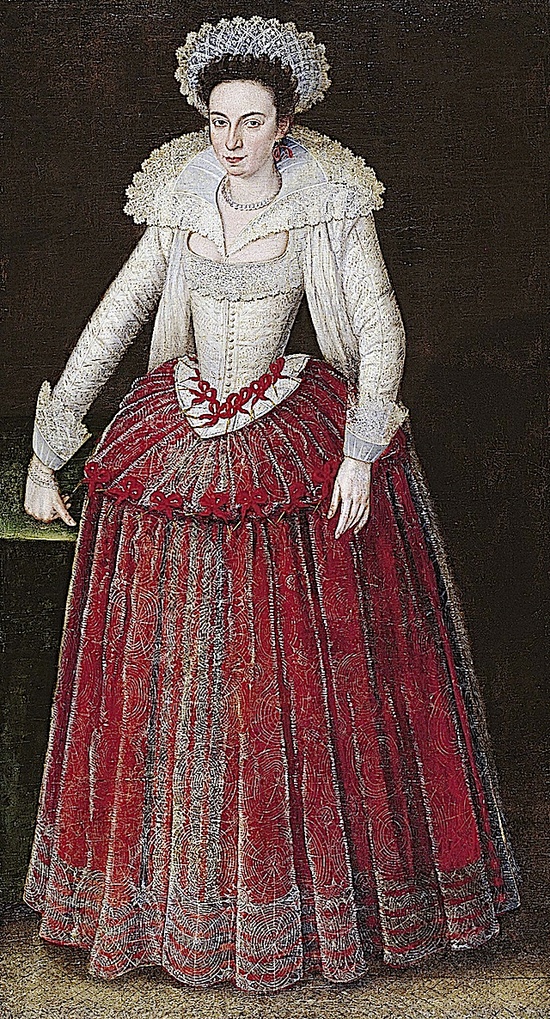
Lady Arabella Stuart by Marcus Gheeraerts the Younger, Norton Simon Museum, Pasadena, Ca, ca. 1605-10
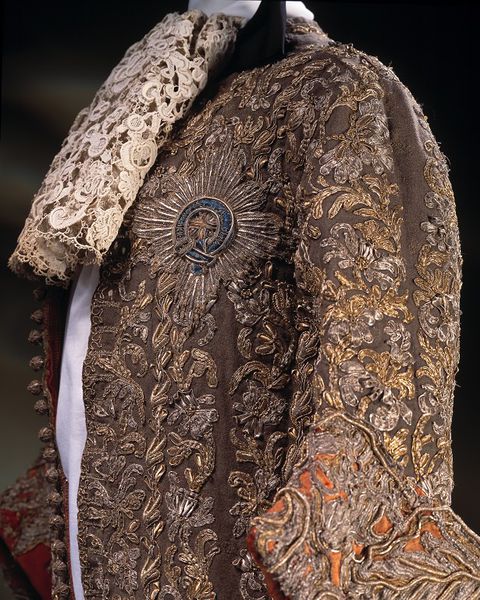
Wedding suit, English, 1673, Wool, embroidered with silver and silver-gilt thread & lined with red silk, V&A
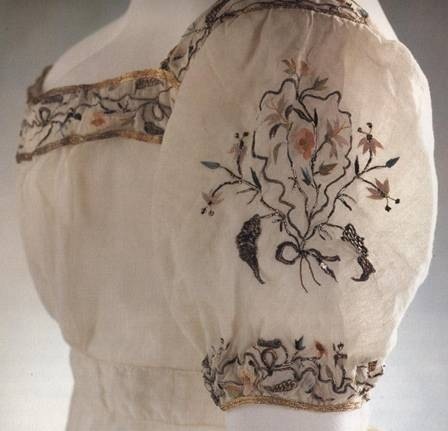
Muslin evening dress 1812-1815. Embroidered with single strands of very fine silk, the stalks are embroidered in silver gilt thread
Metal lace is a personal favourite of mine provides a similar effect, though with less effort:
And there are other types of metal work, like assuit:
Plus, you could bead or bejewel your garment:
And, even if your garment itself wasn’t shiny, you could always add sparkle with jewellery!

Headdress with leaf-shaped ornaments, 2600—2500 b.c.; Early Dynastic period IIIa; Sumerian style Excavated at “King’s Grave,” Ur, Mesopotamia Gold, lapis lazuli, carnelian


